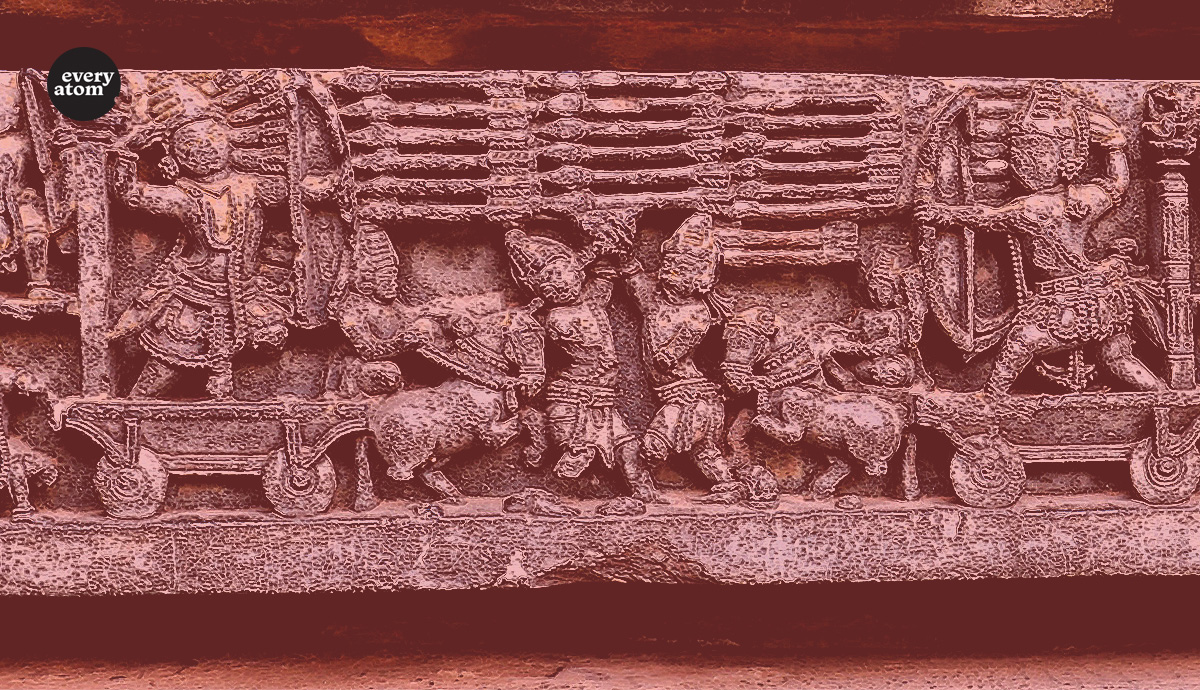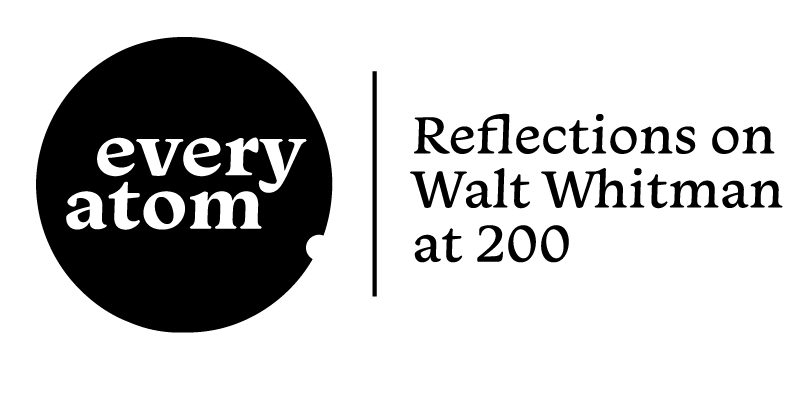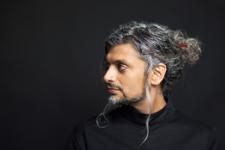Every Atom | No. 62
Introduction to Every Atom by project curator Brian Clements
Whitman was not creating poetry as much as he was creating a mythology or a cosmology, of himself as well as the text itself, which perhaps he saw as an extension of his own body.
Certainly it lived and breathed and changed and had a life from age to youth.
Like Ginsberg, one of his heirs, Whitman saw a circular passage of American reach, not merely an east-to-west movement of the manifest destiny of Mexican wars and expansion into indigenous communities of the Midwest and west but a continuous motion and collapse of modern and ancient, a motion that centuries later would extend into space itself.
It’s appropriate that Whitman’s spiritual sources seem to have been the Sanskrit vedas and vedanta, including the Mahabharata, since those epics too exist out of time: the mythic warriors of those poems used great laser cannons and celestial weapons with the power of any nuclear bomb.
That’s who Whitman is to me—some kind of super-warrior science fiction era dizzy visionary writing a new mythology for the American continent—a continent that was not, on the other hand, any kind of blank page.
The transcendentalists—Emerson and Whitman and others—drew from Eastern traditions to oppose them to the hierarchical west without recognizing the core idea of yoga was that in the endless of cycle of birth and rebirth, one must be considered worthy to be reborn in a higher form.
Such thinking can justify new hierarchies of political and economic power, as well as using a spiritual justification to control labor and assign certain kinds of labor to certain kinds of people.
While Whitman is seen as a harbinger of the democratic American spirit, this dark shadow of Puritan Calvinism found new life in American soil.
One reason Whitman suggests it is “lucky” to die is that it is a chance—a chance to ascend, to be reborn in a better form. But Whitman’s democratic rhetoric, unlike Carl Sandburg’s or Allen Ginsberg’s, was not wedded to a revolutionary political ideal nor a true embrace of Buddhist or Hindu practices.
Unlike Sandburg, a devoted socialist, Whitman was a nationalist and a pragmatic one at that. Unlike Ginsberg, Whitman’s engagement with eastern philosophy was surface-level.
Whitman’s work is best understood as part of a nineteenth century pre- and post-Civil War American mythmaking. He observed the radical potential of America but offered no critique of its racist structures or imperialist expansions.
If Whitman is relevant today, it is as an example of the limits of vision that history places upon all of us.
Recommended
Nor’easter
Post-Op Appointment With My Father
Cedar Valley Youth Poet Laureate | Fall 2024 Workshop







